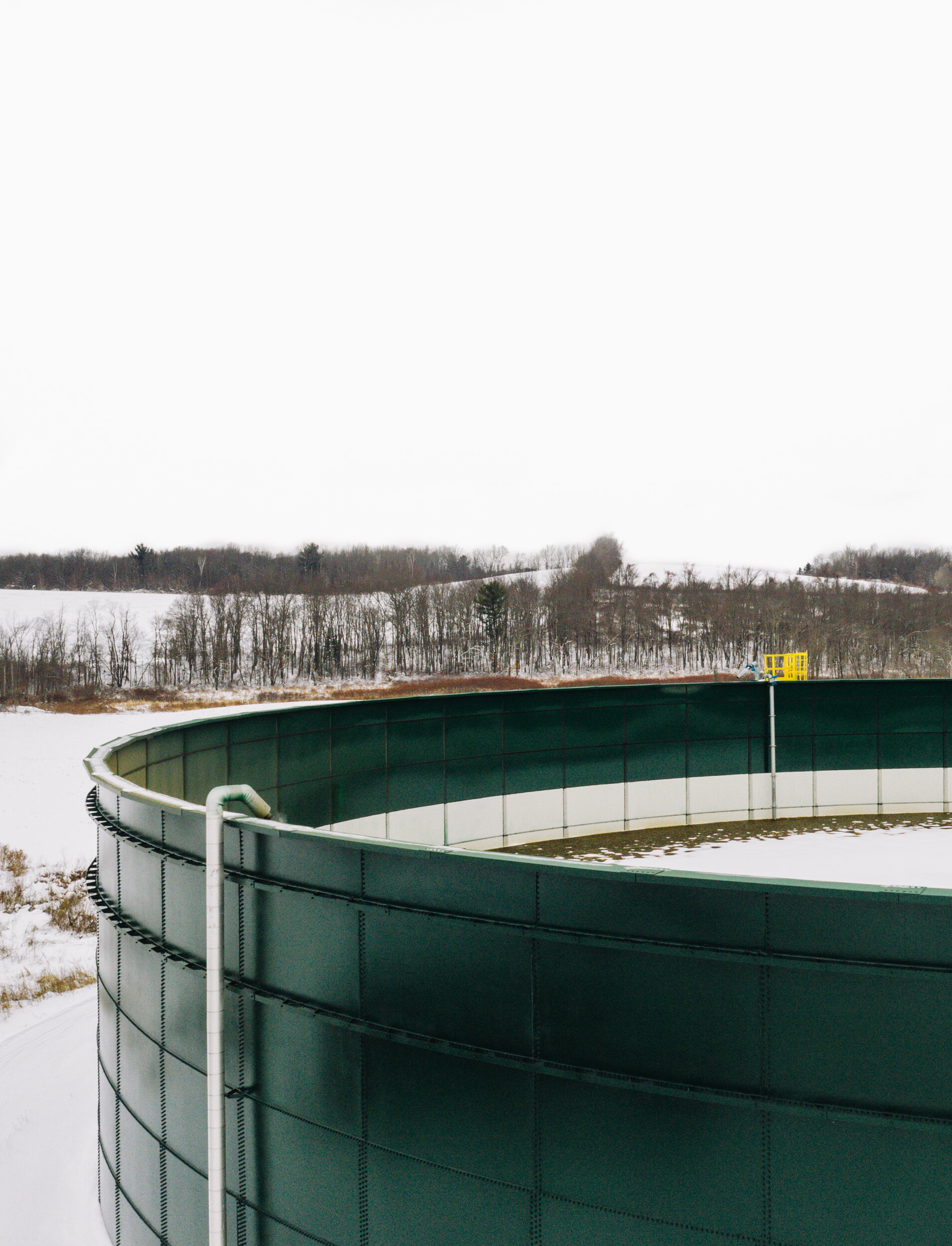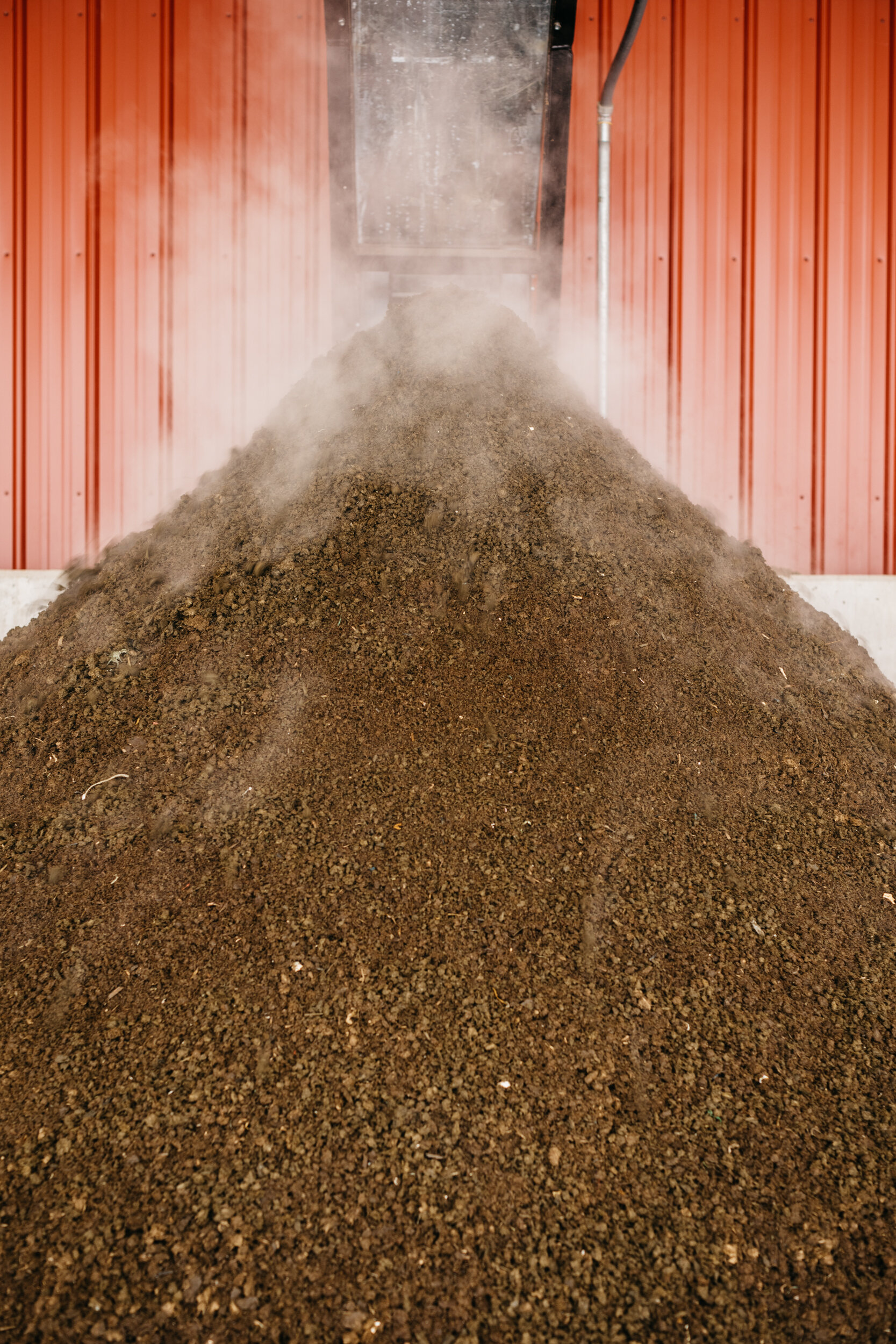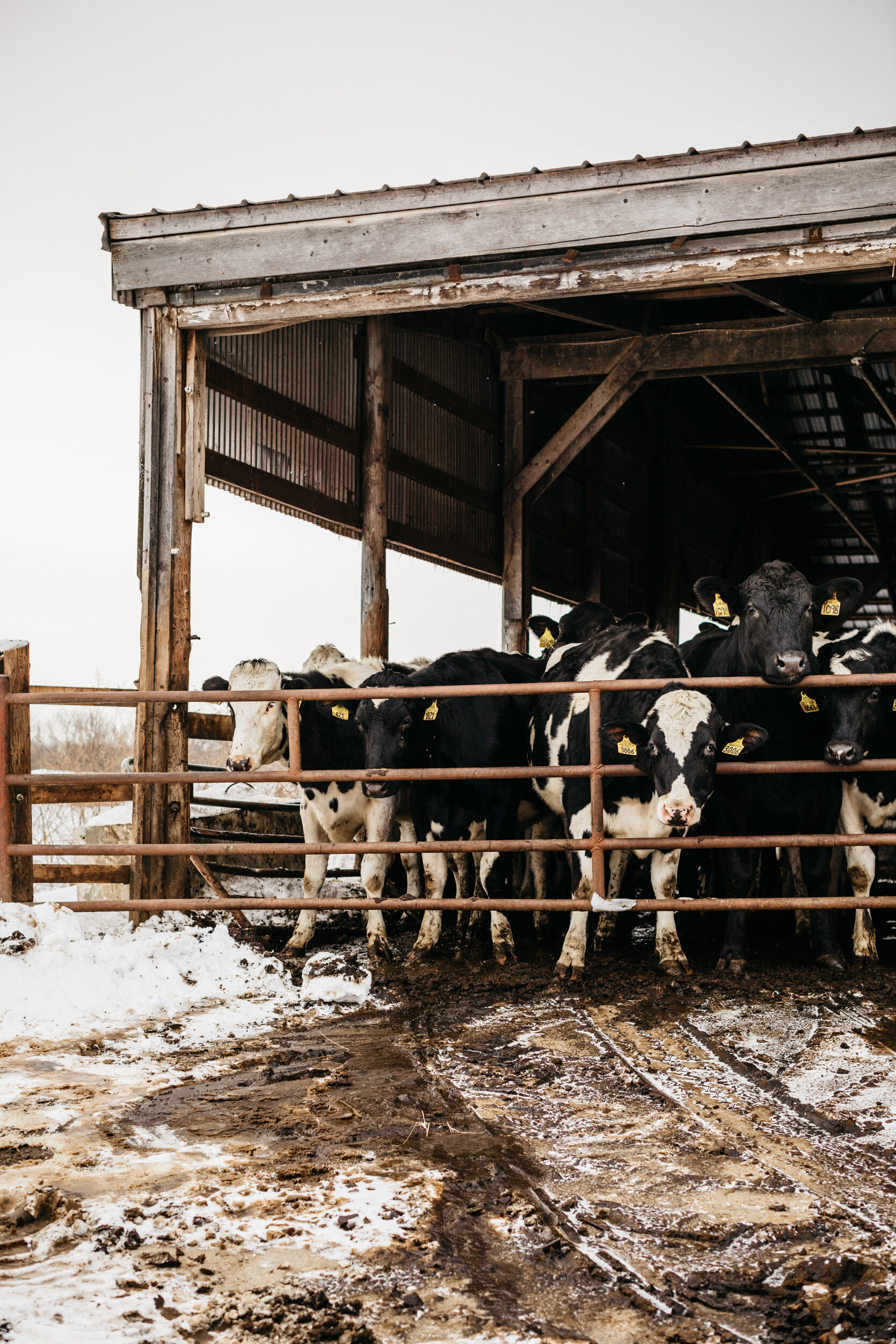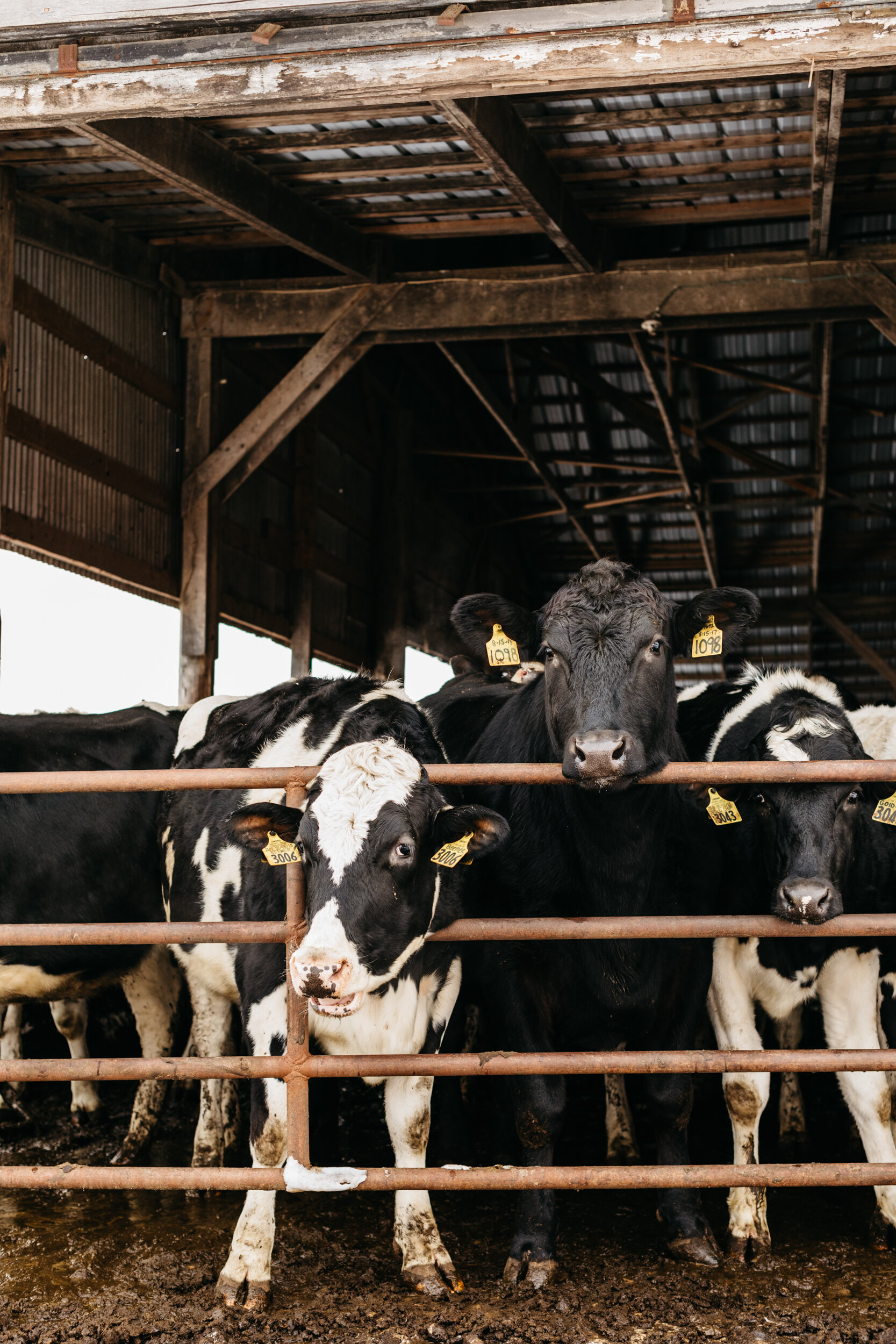Panning for Gold in the Waste Stream: Vanguard Renewables helps farmers harvest energy from their by-products
Photos by Michael Piazza
When Randy Jordan takes part in his local Fourth of July parade these days, he no longer worries about neighbors turning their noses up at him. In the past, they had their reasons. Early July is when Jordan, a fifth-generation dairy farmer, fertilizes the fields of his family’s farms in Spencer and Rutland. For many years, the fertilizer he spread across hundreds of acres was manure from the farms’ lagoons. The olfactory reminder hung in the air longer than any fireworks display.
Jordan still treats his fields at the same time of year and he still uses fertilizer produced on the farm, but without the smell. It’s a win for the neighbors, but an even bigger win for the economic health of the farm and for the environment.
In 2011, Jordan Dairy Farms’ Rutland location became the first farm in New England to host a large-scale anaerobic digester. Anaerobic digestion is a process that converts organic materials from food waste and livestock manure into bio-gas that can be used as a renewable energy source. At Jordan’s, the manure is provided by hundreds of dairy cattle, and the food waste comes from large commercial producers like Gorton’s Seafood, Cape Cod Potato Chips and Cabot Cheese. When the anaerobic microbes are done digesting sugars, fats and other compounds from these organic materials, the farm receives heat and electricity. The digestion process also produces clean solids that are used as bedding for the farm’s cattle. Finally, it produces the rich, odorless, liquid fertilizer that Jordan now applies to his fields.
The Jordan family began exploring the potential of anaerobic digestion more than a decade ago, and partnered with Wellesley-based Vanguard Renewables, the largest organics recycler in the Northeast, to build and operate its two digesters: the Rutland facility and a larger digester at Jordan’s Heifer Facility in Spencer that opened in 2019. The Spencer site co-digests more than 10 tons of manure and 100 tons of organics daily and creates 8,410 megawatt-hours of renewable energy per year that not only powers the farm, but goes back into the grid. Vanguard CEO John Hanselman calls this high-tech, multistage installation the “iPhone 11” of anaerobic digesters.
The promise of free power was what first attracted Jordan to the whole undertaking.
“One of the largest bills I had at the farm—after my mortgage and grain bill—was my electricity bill. It was astronomical at the time. I felt it wasn’t going down. I didn’t care then about my next-door neighbors thinking about the manure smells,” Jordan says. He carefully weighed his options, noting that 87% of anaerobic digesters fail. When Jordan met Hanselman and Vanguard, things began falling into place. Vanguard’s emphasis on both constructing and operating the digesters, which can be complicated to keep running properly, helped convince Jordan. Hanselman acknowledges that Jordan’s skepticism about new technologies was well founded.
“Farmers get pitched a lot of wacky stuff, and there are a lot of people who are trying to take their money by being not so scrupulous. So we had to do a lot of proving,” Hanselman says.
Hanselman grew up working on a chicken farm and made his career in renewable energy. He understands both the mind-set of farmers and the economic pressures they face.
“I was in a farmer’s kitchen last month, and he had just gotten his milk check from a co-op. He showed it to me, and his 82-year-old dad was sitting next to him. His dad said: ‘This is the same number of cows we had when I had the farm, and we got the exact same amount on the milk check in 1974,’” Hanselman says.
The business model for Vanguard’s anaerobic digesters help contribute to the economic well-being of farmers in several ways. First, Vanguard pays rent to farms for hosting the facilities. At Jordan’s Spencer facility, that is a five-acre parcel. The digesters also provide free electricity, natural gas, animal bedding and fertilizer that help cut expenses. Eliminating the need for synthetic fertilizer alone can result in savings of up to $200,000 a year for a dairy farm. There are other benefits too. A USDA audit shows fields treated with natural fertilizer from the digesters yield 20% more hay production per acre, and a 25% increase in nutrients, according to Hanselman.
The relationship with farmers is the most important part of Vanguard’s future success.
“Dairy farmers are under huge pressure, and this thought that we can take and recycle food waste, power the farm and then power their survival, for me, is one of the best things that we do,” Hanselman says. When Vanguard began, they saw themselves as a renewable energy company that happened to be located on farms.
“We had it all sideways,” the CEO says. “We’re actually a farm-based food waste recycling company that happens to make renewable energy.”
For the anaerobic recyclers to work, they require regular sources of food waste. Since 1990, Massachusetts has banned disposal of certain compostable materials at solid waste facilities. In October 2014, the Massachusetts Department of Environmental Protection (MassDEP) went further to ban all commercial entities that produce one ton or more of organic materials per week from sending that waste to landfills. MassDEP estimated that 1,700 entities across the state met the threshold.
With these stringent rules, food manufacturers were suddenly searching for new ways to handle food waste, providing a boon for companies like Vanguard that offered a cost-effective option for hauling away food waste to be composted or recycled. The 2014 ban also encouraged grocery stores, colleges and others to explore food recovery and food donation as ways of keeping usable food out of the waste stream in the first place. Although enforcement of the ban has been less stringent than some had hoped, the rescue of fresh and perishable foods has grown by 60% and the number of businesses with food waste collection programs has grown by 70% since 2014.
Hanselman notes that even with the best efforts, there will always food that can’t be donated or repurposed. This is the material that fuels Vanguard’s digesters.
“This is the stuff that you can’t do anything else with. We take a lot of trimmings from meat, stuff like that. That’s not food that people could or should have access to. It’s not healthy stuff, but to us it’s really exciting.” Companies like Whole Foods, Cabot and Gorton’s were early Vanguard clients who found a cost-effective partner to take their food waste. Recently, Hanselman has seen a growth in clients such as restaurants, colleges, hotels and even whole communities that now offer curbside composting for residents.
The variety of food waste received from these sources is important to keeping Vanguard’s anaerobic digesters working smoothly. On a visit to the Spencer facility, a truckload of waste from Treehouse Brewing in Charlton was being added to the tank. At the end of the brewing process, spent hops, yeast and other debris remain. This material, called trub, goes to Vanguard. Also destined for the 170,000-gallon pre-digestion tank in Spencer are contents from the grease traps at McDonald’s and Target stores throughout the region.
Since Vanguard operates five digesters throughout the region—number six is currently being built in Middlebury, Vermont—they are able to direct waste where it is needed based on monitors that show the chemical composition at each site and how the microbes are reacting.
“The bugs that actually eat the food waste and create the methane, they like a balanced meal. They’re just like us. If you feed them all one food, they get bored,” Hanselman says. Also like us, the one food they never tire of is ice cream. They also like alcohol, sugar and fat, which are all high-energy foods.
Vanguard’s understanding of how to balance the diet for microbes came over time. Early on, they put into the tanks whatever they had collected for the day, sometimes resulting in too much high-energy food all at once. The microbes would produce a great deal of methane one day, then shut down the next.
“It was just like your 5-year-old who ate all of her Twinkies. They’d pass out the next day, and it was killing us,” Hanselman says.
The technology Vanguard uses has also improved over the years. At the state-of-the-art Spencer facility, digestion happens in a two-stage process: Waste goes into a pre-digester, where five days’ worth of food waste is mixed and stirred in a massive 170,000-gallon tank that extends 15 feet underground. The waste is kept away from the air and at a constant temperature of about 102°F. Standing on top of the tank, the smell is minimal and organic—no more than you might find from the kitchen compost container.
Once an optimal mix is created in the pre-digester, the material is transferred to a 700,000-gallon digester, where the microbes begin doing their work to break down the waste. The methane they produce inflates covers on the tops of the tanks. To keep the microbes working and avoid dead spots in the digestion process, the material is continually circulated. Different types of microbes, or “bugs” as Hanselman prefers to call them, attack different types of compounds: Fats that end up toward the bottom of the digester are dinner for some; sugars that make their way to the top are dinner for others.
“Our bugs never sleep, so we’re a 24/7 operation,” he says. The entire process, which also includes generating power and sending it to the farm and back into the grid, is monitored with a complex on-site system that is also accessible back at the Vanguard office.
Efforts like those represented in the Jordan-Vanguard partnership are beginning to have impact. MassDEP figures show that anaerobic digestion capacity in Massachusetts has increased by 600,000 tons since 2014. A study prepared for the department showed that the waste reduction industry in the Commonwealth generated $174 million in economic activity in 2016 and was projected to employ 1,370 people as of 2016. More importantly, according to the department’s 2030 plan, the growing effort helps lay a foundation for “moving toward a zero-waste future for Massachusetts.”
But for now, Hanselman is focusing on opportunities for capturing more waste, creating more renewable energy and helping farmers.
“Once you start to recognize that food waste is renewable energy on the hoof, as it were, you’re cursed. You see it. It’s everywhere,” he says.
This story appeared in the Winter 2020 issue.






